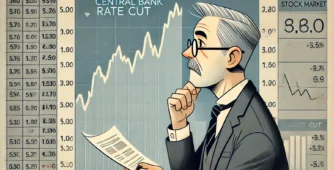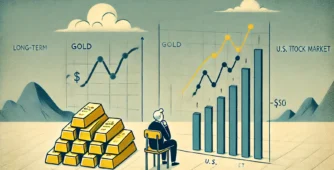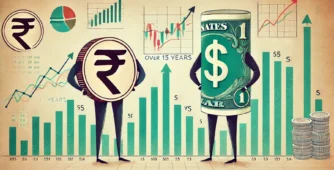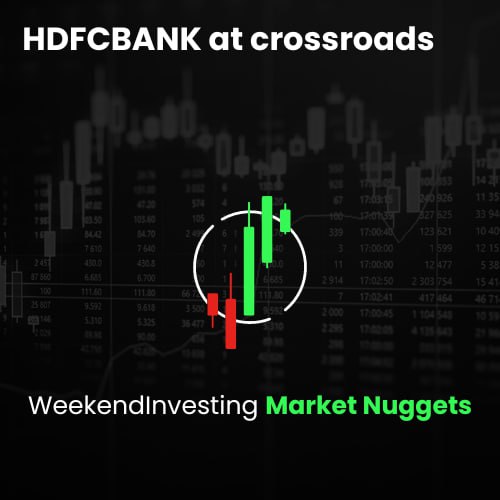
HDFC Bank: Analysing the Stock Performance and Trends
Since January 2021, HDFC Bank has been caught in a range-bound movement, essentially consolidating within a specific price range. This consolidation can be viewed as a positive indicator for the long term, as it presents an opportunity for the stock to potentially make further gains.
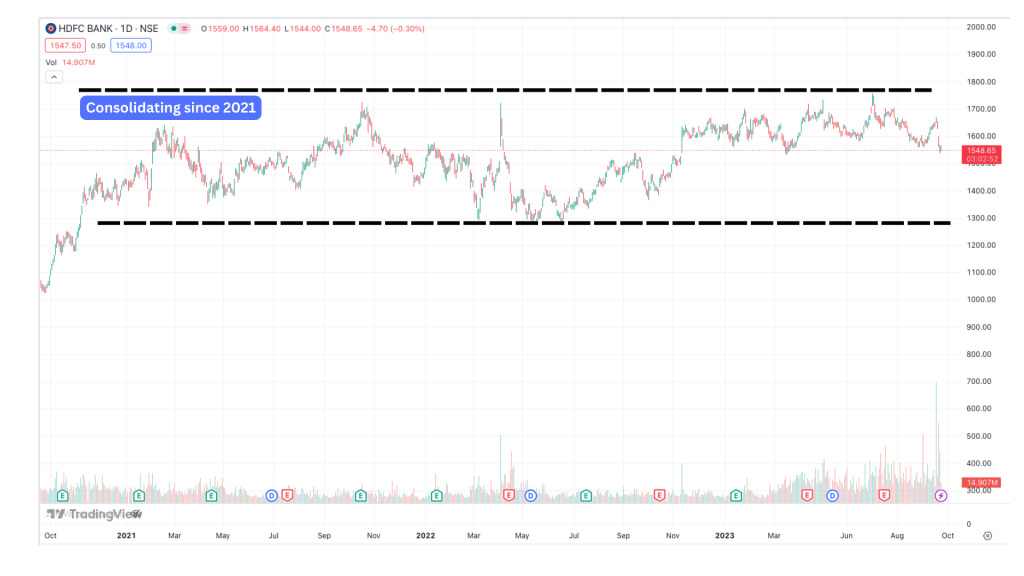
By examining the chart, we can identify previous instances of consolidation, such as the period from 2000 to 2003.
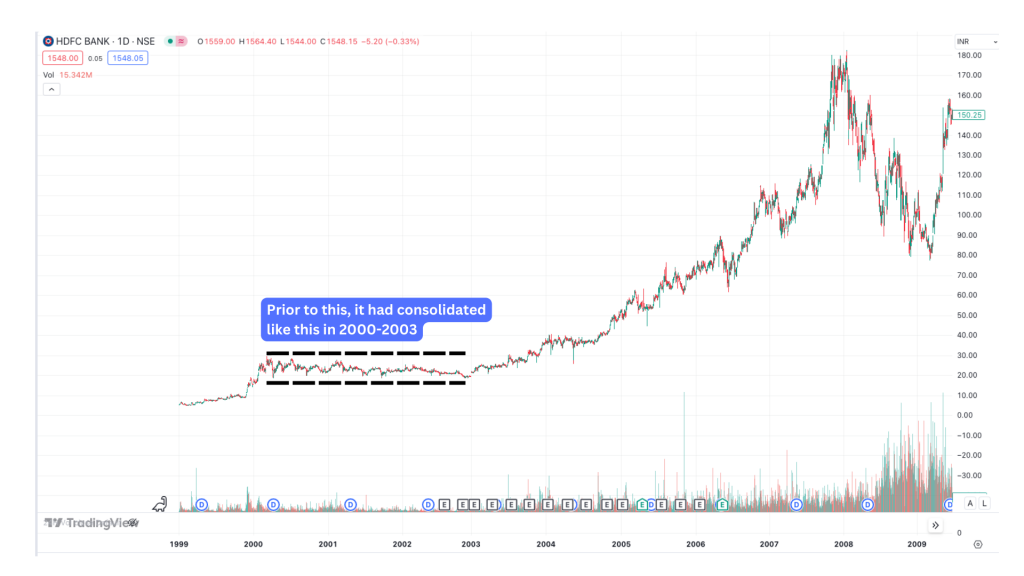
Throughout its history, HDFC Bank has experienced relatively few consolidation phases. Notable periods of consolidation occurred in 2012 to 2014, following a significant 50% upward price movement, and in 2015 to 2016 as well. Considering the stock’s growth trajectory, it is possible that the current consolidation phase may lead to an eventual breakout.
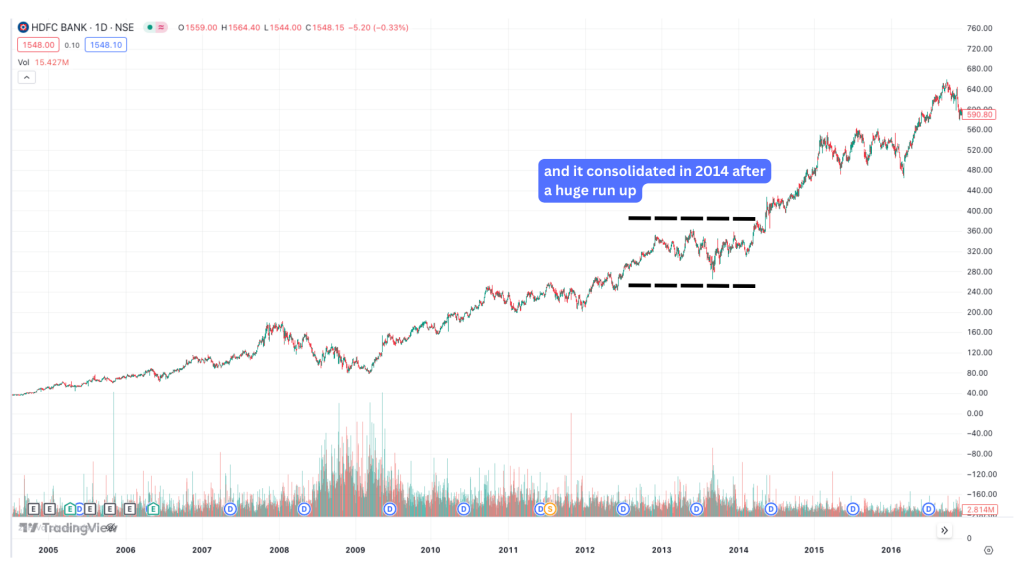
However, if we focus on the short-term perspective, it is apparent that HDFC Bank recently broke down from a trend line, then retested it before falling once again. This scenario suggests a bearish outlook in the near term. Presently, the stock is in close proximity to a pivotal bottom reached in March 2023. If it bounces back from this level, it could provide a good entry point for long positions, particularly around the 1530 level.
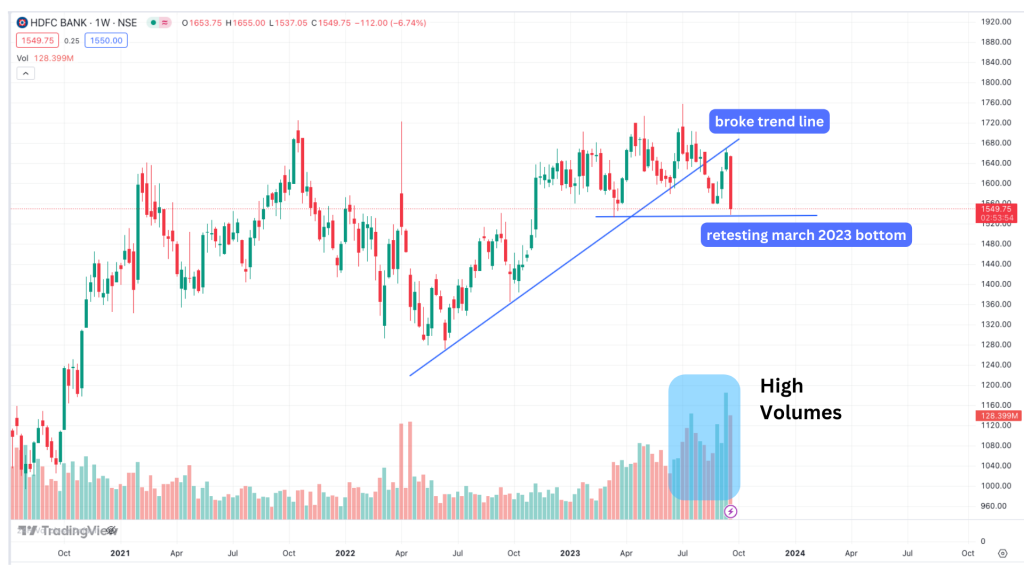
When examining longer-term trend lines, it becomes evident that many of them have been broken. Additionally, the volumes of trading activity have substantially increased since February. These factors suggest a possible distribution phase occurring in the stock market, which might impact HDFC Bank’s performance.
HDFC vs Private Bank Index
To gain further insight, let’s compare HDFC Bank’s performance to that of the private banking sector as a whole. When contrasting the Nifty private banks index with HDFC Bank, a divergence becomes apparent from January 2022 onwards. Although HDFC Bank represents a significant stake in the private banks index, it has been stagnating while other private banks continue their ascent.
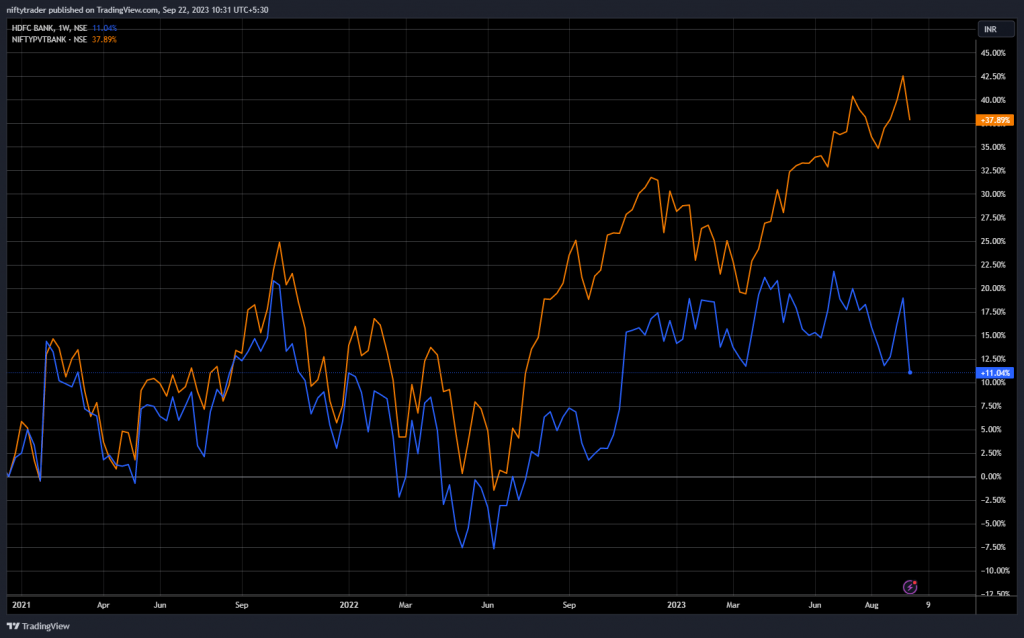
For instance, if we assess ICICI Bank’s performance since the market bottom during the COVID-19 pandemic, we observe a remarkable 182% increase. In contrast, HDFC Bank has only risen by 66%, highlighting a clear discrepancy. Furthermore, looking at PSU (Public Sector Undertaking) banks, we find that the CNX PSU banks index has surged by 338% in the same period. This data suggests a shift in market preference towards other private banks and PSU banks, rather than HDFC Bank.
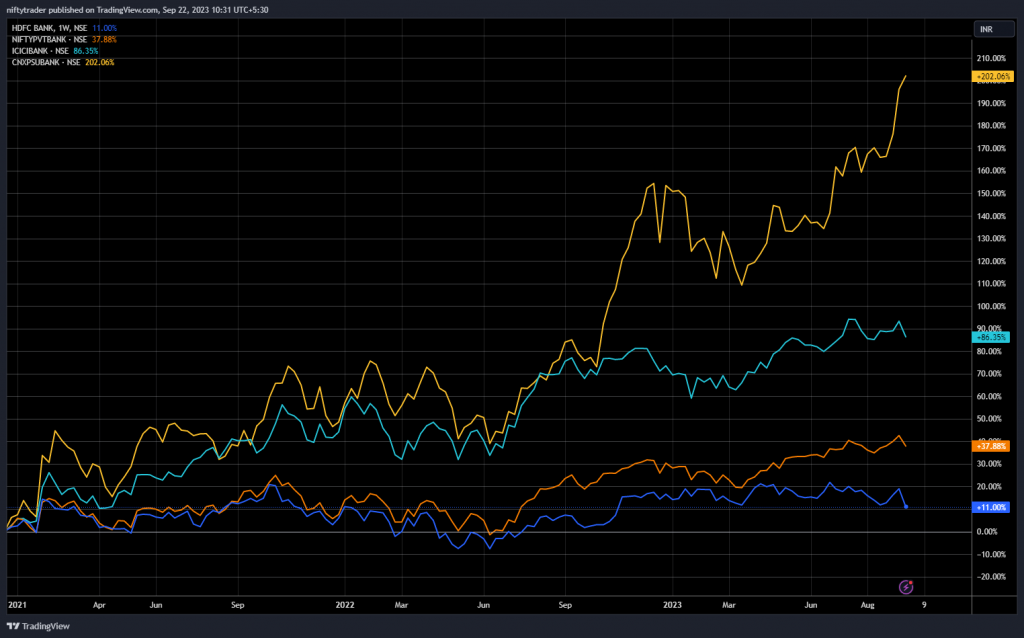
It is crucial to acknowledge that HDFC Bank remains significant and should not be dismissively overlooked. However, the market sentiment indicates that investors anticipate lower returns from HDFC Bank compared to other institutions. This shift in preference is reflected in the liquidity flows towards different sectors of the banking industry.
Download the WeekendInvesting App

If you have any questions for us. please write to us!



